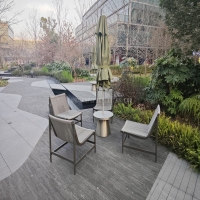Welcome to the website for landscape facilities products and knowledge.
How does the manufacturer ensure the table’s materials are resistant to fading from sunlight?
Manufacturers employ multiple sophisticated strategies to ensure table materials maintain their color and integrity when exposed to sunlight. The process begins with careful material selection, where manufacturers choose inherently UV-resistant substances such as certain hardwoods, metals with protective finishes, and high-quality polymers specifically engineered for outdoor use. These materials undergo rigorous testing in simulated sunlight conditions to assess their fade resistance before production.
Advanced coating technologies represent another crucial layer of protection. Manufacturers apply specialized UV-resistant finishes and sealants that create a protective barrier against harmful ultraviolet rays. These coatings contain UV absorbers and stabilizers that either block or convert damaging radiation, preventing it from degrading the underlying material. The application process involves precise techniques to ensure even coverage and maximum protection.
Many manufacturers incorporate fade-resistant additives directly into materials during production. For wooden tables, this might include penetrating stains with UV inhibitors, while plastic and composite tables often contain light-stabilizing compounds mixed throughout the material. This integrated approach ensures protection even if the surface becomes scratched or worn over time.
Accelerated weathering tests form an essential part of the quality assurance process. Tables undergo exposure to intense simulated sunlight in specialized chambers that replicate years of outdoor exposure in a condensed timeframe. This allows manufacturers to predict long-term performance and make necessary adjustments to material formulations or protective coatings.
The manufacturing process also includes consideration of material density and composition. Denser materials typically resist fading better than porous alternatives, as they provide less opportunity for UV penetration. Manufacturers often select tight-grained woods or high-density synthetic materials specifically for their superior resistance to solar radiation.
Regular quality control checks throughout production ensure consistent application of protective measures. Manufacturers maintain strict standards for coating thickness, material composition, and finishing techniques to guarantee every table meets established fade-resistance criteria. This comprehensive approach from material selection through final production ensures tables maintain their aesthetic appeal and structural integrity despite prolonged sun exposure.
Related search:

Recommendation
Metal structure rattan chair without armrests for single person, with woven seat and backrest.